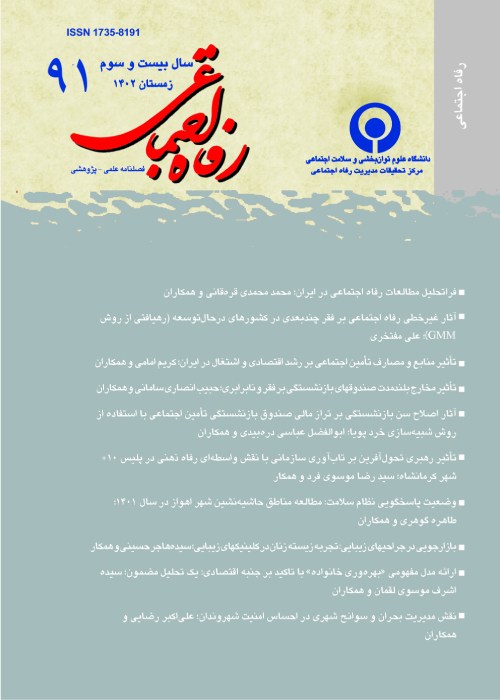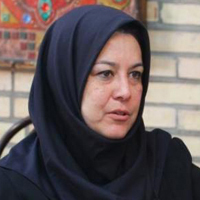A nationwide gender-sensitive survey of Iranian Behvarzes (health workers), their. Job satisfaction and motives
Author(s):
Abstract:
Objectives
The article is based on a nationwide quantative gender-sensitive research on Iranian rural health workers’ working conditions, job satisfaction and motives using a representative sample of 2416 “behvarz”es. Behvarzan, or the locally sourced health workers or are originally trained to meet the basic healthcare needs of people living in rural areas. A female behvarz is responsible for, among other things, child and maternal health, a male behvarz for sanitation and environmental projects. The health workers are well familiar with the culture and traditions of were they live and work i.e. Iranian villages throughout the country. There are about 17 000 health houses in the Islamic Republic of Iran, according to the recent Ministry of Health statistics. Almost 27 000 community health workers are working in these health houses, more than half of them women. On average, each health house serves 1500 people in its village and surrounding settlements. Since a community health worker is from the local people therefore has their approval and support. These workers regularly supervise people's health. Among their duties, female community health workers are responsible for vaccinations, registrations and administering medicines. A male community health worker is charged with activities mainly outside the health house, such as making follow-up visits to patients and identifying them in surrounding villages. The minimum age for male and female health workers is 20 and 16 respectively. They are required to have had 11 years of regular education, plus two years of theoretical and practical training before being awarded a certificate to be allowed to practice. Even after their graduation, the behvarzan are subject to regular monitoring and distance-learning to meet the requirements by the Ministry. According to the Iranian health officials, these community workers have made huge success in improving Iranian health indexes. They has made a significant contribution to the sharp decline in mortality rates in the past three decades,helping to reduce deaths among infants and pregnant women, and curbing contagious diseases. Method
This was a nationwide survey with a representative sample of 2416 rural health workers based on a combination of sampling methods using the latest list of (sampling framework) of around 27000 behvarzes provided by the officials of the ministry of health in Iran. Findings
The findings show that there were significant differences between female and male health workers’ job satisfaction with regard to different aspects of their job. Females were more satisfied with the job as a whole while for males the satisfaction was sourced out of their clients’ appreciation and the support and appreciation from the directors. The dissatisfaction with their job was caused mainly by low income as for males and the amount of work load for women. There were large differences among health workers living in various provinces and over all the job satisfaction was affected significantly by age, marital status, job history and having extra income by other sources. Results
Results
There were statistically significant differences betwwwn female and male health worker's job satisfaction with regard to different aspects of their job. Overall dissatisfactions among female. Health workers were concerning their huge work-load whereas male health workers were more dissatisfied with the issue of income and rewards. However, in general female health-workers or behvarzes were More satisfied compared to men, with their income as well as their job As a whole. They were however less satisfied in terms of the community's appreciation and the reactions from the supervisors and higher officials. It was seemingly somehow reflecting the conventional Patriarchal relationship pattern in the traditional and rural areas Atmosphere in relation to female workers.Keywords:
Language:
Persian
Published:
Social Welfare Quarterly, Volume:8 Issue: 30, 2008
Page:
117
magiran.com/p1243109
دانلود و مطالعه متن این مقاله با یکی از روشهای زیر امکان پذیر است:
اشتراک شخصی
با عضویت و پرداخت آنلاین حق اشتراک یکساله به مبلغ 1,390,000ريال میتوانید 70 عنوان مطلب دانلود کنید!
اشتراک سازمانی
به کتابخانه دانشگاه یا محل کار خود پیشنهاد کنید تا اشتراک سازمانی این پایگاه را برای دسترسی نامحدود همه کاربران به متن مطالب تهیه نمایند!
توجه!
- حق عضویت دریافتی صرف حمایت از نشریات عضو و نگهداری، تکمیل و توسعه مگیران میشود.
- پرداخت حق اشتراک و دانلود مقالات اجازه بازنشر آن در سایر رسانههای چاپی و دیجیتال را به کاربر نمیدهد.
In order to view content subscription is required
Personal subscription
Subscribe magiran.com for 70 € euros via PayPal and download 70 articles during a year.
Organization subscription
Please contact us to subscribe your university or library for unlimited access!



